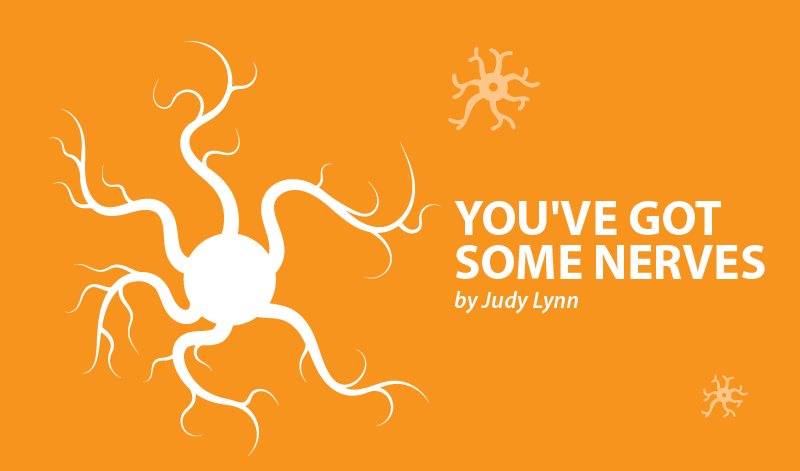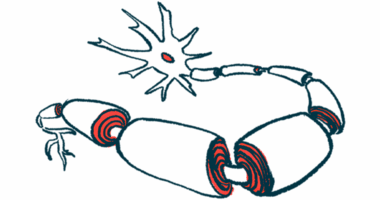Find Your Strength and Adjust Your Mindset


The second module in the National Multiple Sclerosis Society’s positive psychology program, “Everyday Matters,” is called “Adjusting Our Mindset,” or “the fulcrum and the lever.” In science, the law of the lever states that power into the lever equals the power out, and the ratio of output to input force is given by the ratio of the distances from the fulcrum to the points of application of these forces. The fulcrum is the center, or pivot point, for the lever. The longer and stronger the lever, the greater the movement of the fulcrum.
According to Shawn Acor, creator of “Everyday Matters,” this scientific principle can apply to positive psychology. Shawn suggests we think of our mindset like this:
- The length of your lever: how much potential power and possibility you believe you have
- The position of your fulcrum: the mindset with which you generate the power to change
Similar to the previous module, “Happiness as a Habit,” we cannot change our perception and experience of the world through sheer will alone. But, according to the NMSS, we can use our brain to “change how we process (think about) the world, in turn changing how we react to it. Our brains are organized to act on what we predict will happen. You get what you perceive.”
The fulcrum, in this scientific scenario, is your mindset or the center of your experience on this earth. You can shift this center point through the movement of your lever, thereby changing your mindset to go after the positive outcomes in life. This seems to beg the questions “How do I use my lever? How do I make my lever longer to maximize my potential for positive change? What if my lever feels entirely stuck and rusted in place?”
The length of your lever depends on recognition of your inherent strengths. What are some strengths that you can leverage to help move the fulcrum and change your mindset? I found it helpful, at this point in the module, to make a quick list of my strengths. Take a few minutes to do this and, hopefully, you will be pleasantly surprised. Maybe you are organized, kind, generous, good at math (this clearly is not on my list), brave (you all get this one), detail-oriented, spontaneous, etc. Are you an awesome poker player, best cookie maker, or gorgeous gardener? Fight the urge to tarry on your limitations or weaknesses; make what I like to call your “power list.”
Now it’s time to apply a bit of the placebo effect to the process by believing that you can use those strengths to move the lever. The NMSS says that, “According to empirical reviews of placebo studies, 55-60% of placebos are as effective as most active medications. Biologically speaking, the expectation of an event causes the same complex set of neurons to fire as if the event was actually occurring. This triggers events in the nervous system causing real physical consequences. In essence, beliefs can actually produce real results.”
The expectation, or belief, that your lever can move is all that you need to break through the rust locking your mindset in place. If that feels too hokey for you, try this next step used in schools and workplaces around the country. Use this worksheet to choose a goal — something small and something SMART.
SMART goals are Specific, Measurable, Achievable, Realistic and Time-Limited.
If your goal is to eat more healthily, how can you make a SMART goal that also uses your strengths? For instance, if you are creative and a good cook then your goal might be: “Find two new vegetables to use in recipes this week.”
If you don’t like cooking, but your strength is frugality, your goal might be: “Buy five frozen, pre-cut vegetables for under $5.” The key is to set yourself up for success by utilizing pre-existing strengths to reach your goals.
Mindfulness and meditation can also help adjust one’s mindset. The Mindfulness Awareness Research Center is a partner of the Norman Cousins Center for Psychoneuroimmunology at UCLA’s Jane and Terry Semel Institute for Neuroscience and Human Behavior. Their website offers guided meditations and podcast sessions:
- Free guided meditations
- Weekly 30-minute guided meditation podcasts at UCLA’s Hammer Museum. You can download or stream these podcasts.
Many topics, like “Working with Physical Pain” or “Self-Care and Mindfulness,” seem custom-made for those of us with MS. “Each week has a different theme and usually includes introductory comments, guided meditation, silent practice time, and closing comments. Each also offers a new daily life practice for the week.” There are also sessions on joy, gratitude, and other concepts that support “Happiness as a Habit.”
The practice of mindfulness allows us to sit with our center, to understand the position of our individual fulcrum without judgment. And then, if we choose, use our innate strengths to pull the lever. We can adjust our mindset in the direction of positive change by recognizing our strengths and using them to help reach our goals. Good luck!
***
Note: Multiple Sclerosis News Today is strictly a news and information website about the disease. It does not provide medical advice, diagnosis, or treatment. This content is not intended to be a substitute for professional medical advice, diagnosis, or treatment. Always seek the advice of your physician or other qualified health provider with any questions you may have regarding a medical condition. Never disregard professional medical advice or delay in seeking it because of something you have read on this website. The opinions expressed in this column are not those of Multiple Sclerosis News Today, or its parent company, Bionews Services, and are intended to spark discussion about issues pertaining to multiple sclerosis.







Leave a comment
Fill in the required fields to post. Your email address will not be published.